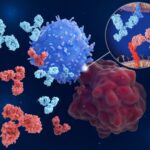No products in the cart
CJC-1295 and Ipamorelin: Growth Hormone Releasing Hormones

Exploring CJC-1295 and Ipamorelin: Growth Hormone Stimulation
CJC-1295 and Ipamorelin are both individually classified by researchers as Growth Hormone Releasing Peptides (GHRPs). When combinatorially researched, these peptides may offer a synergistic advantage in growth hormone stimulation.
CJC-1295 is considered by researchers as a synthetic analog of Growth Hormone Releasing Hormone (GHRH), sharing a chemical structure that closely resembles GHRH. CJC-1295 peptide may affect growth hormone (GH) upregulation in a manner similar to GHRH. Scientific research claims suggest potential actions associated with CJC-1295, including effects on bone development, muscle density, sleep cycle regulation, lipolysis, and apoptosis mitigation. Researchers propose that CJC-1295 exposure in animal research models may result in a favorable rise in GH levels.
Ipamorelin, considered a synthetic peptide and categorized among Growth Hormone-Releasing Peptides (GHRPs), resembles the endogenous compound ghrelin and may bind to ghrelin receptors. Similar to CJC-1295, researchers suggest that Ipamorelin may likewise increase GH levels.
Comparing CJC-1295 and Ipamorelin
Both CJC-1295 and Ipamorelin, speculated to be short-chain amino acids, are synthetic peptides that may contribute to improved endogenously produced growth hormone levels. While they share similarities, researchers propose differences in how they affect GH levels.
Researchers suggest that CJC-1295, categorized as a Growth Hormone-Releasing Hormone (GHRH), directly increases the release of GH from the anterior pituitary gland. In contrast, Somatostatin inhibits GH release, and Growth Hormone-Releasing Peptides (GHRPs) such as Ipamorelin, which mimic ghrelin, are thought to lower somatostatin levels, potentially increasing GH levels.
In summary, researchers speculate that both CJC-1295 and Ipamorelin exhibit significant GH-boosting potential, and their combined impact may offer synergistic advantages. While sharing similarities, the differences in their mechanisms suggest nuanced effects on GH production.
Disclaimer: The products mentioned are not intended for human or animal consumption. Research chemicals are intended solely for laboratory experimentation and/or in-vitro testing. Bodily introduction of any sort is strictly prohibited by law. All purchases are limited to licensed researchers and/or qualified professionals. All information shared in this article is for educational purposes only.
Dr. Usman (BSc, MBBS, MaRCP) completed his studies in medicine at the Royal College of Physicians, London. He is an avid researcher with more than 30 publications in internationally recognized peer-reviewed journals. Dr. Usman has worked as a researcher and a medical consultant for reputable pharmaceutical companies such as Johnson & Johnson and Sanofi.





